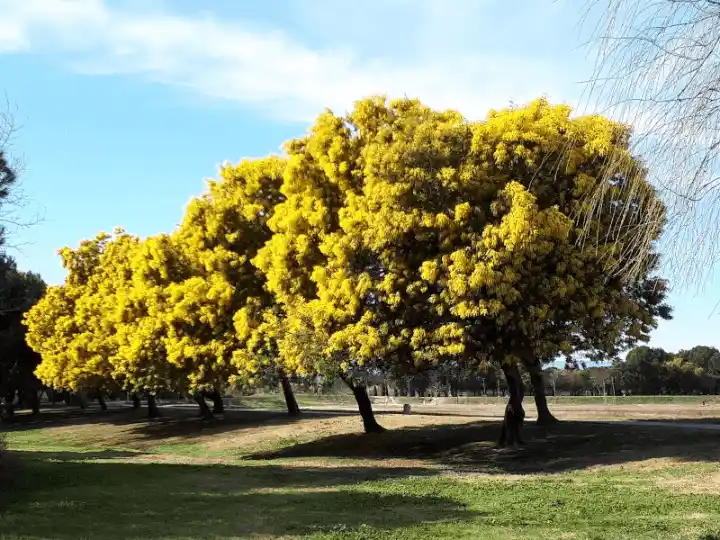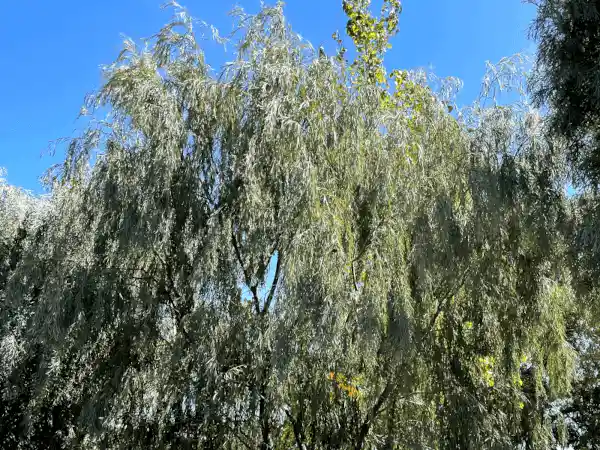
| Botanic name | Acacia pendula |
| Other names | Weeping myall, True myall, Boree |
| Main Origin | Inland Eastern Australia |
| Mature size | 4 – 6 m x 6 – 10 m (w x h) |
| Mature form | Spreading, weeping canopy |
| Foliage | Slender, sword-shaped, silvery-grey |
| Growth rate | Moderate to Fast |
| Position | Full sun |
| Soil | Adaptable to various soil types, including heavy clay |
| Water | Minimal, highly drought resistant |
| Climate | Arid, semi-arid, Mediterranean, temperate, subtropical |
| Flower | Spherical, creamy or bright yellow, from winter to spring |
| Use | Feature tree, shade tree, screening, windbreak |
| Notes | Tolerant of humidity |
IN THIS ARTICLE
Origin and distribution
Acacia pendula, commonly known as the Weeping Myall, is a testament to nature’s resilience and elegance. This Australian native tree thrives in challenging environments, gracing arid landscapes with its distinctive weeping form and silver-grey foliage.
Found primarily in inland regions of eastern Australia, Acacia pendula thrives in inland arid, semi-arid, Mediterranean and subtropical climate zones with low to moderate rainfall and humidity.
In its habitats, Weeping Myall grows in various soils, including alluvial soils (deposit soils consisting sand, clay, silt, and gravel), heavy clay soils, and red earth. It is found in riverbanks, floodplains, open woodlands, and shrublands.
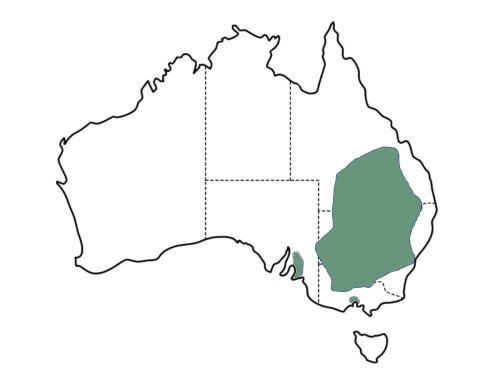
Growth and care
Acacia pendula is renowned for its adaptability and low-maintenance requirements, making it suitable for a variety of landscapes:
This plant thrives in warm, dry climates, including arid, semi-arid, Mediterranean, warm temperate and subtropical zones. Besides its exceptional drought resistance, it is frost-hardy and can endure temperatures as low as -9°C.
Weeping Myall adapts to various substrates: sandy, clay, loam, gravelly, and stony soils. It flourishes in acidic, neutral and alkaline soils, with a pH range of 5.5 – 8.5.
While it thrives in well-drained soils, Weeping Myall has a high ability to tolerate periodic waterlogging. It is also highly tolerant of saline soils.
Once established, it is highly drought-resistant, requiring minimal watering. Deep watering every two weeks during prolonged dry conditions can be beneficial.
Acacia pendula is relatively low-maintenance. It does not produce significant litter. Nor does it need additional fertilisation, as it is also a nitrogen-fixing species. Pruning is generally unnecessary but can be done to maintain the desired shape.
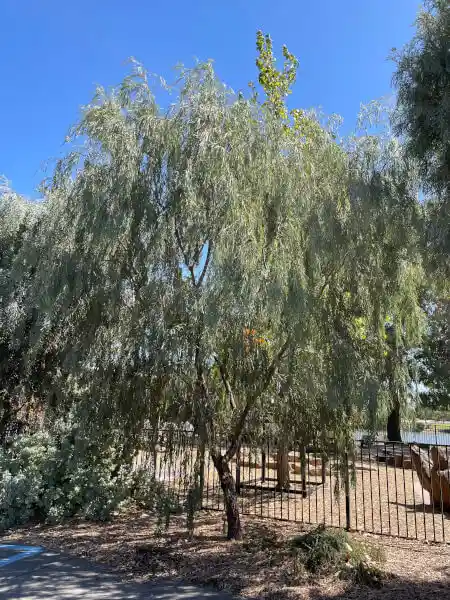
Features
Acacia pendula is a small, hardy tree with a significant aesthetic appeal. It often grows to about 6 – 10 metres in height and 4 – 6 metres in width.
The tree features eye-catching pendulous branches, draped in beautiful, slender, silvery-grey foliage, creating a cascading effect reminiscent of a gentle waterfall, bringing an elegant touch to arid landscapes.
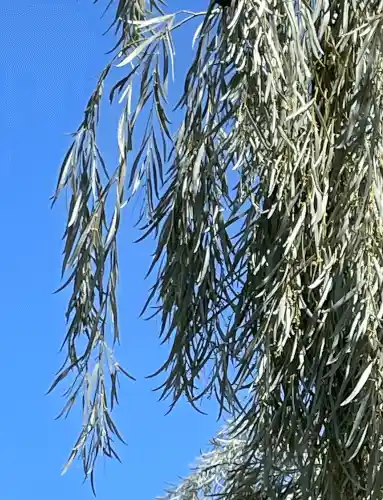
While Acacia pendula often appears stout due to a relatively broad canopy, it is supported by hidden, well-developed main stems that converge into a single strong trunk with rough, fissured grey, brown or black bark.
Small blooms emerge profusely from late winter to early spring or sporadically throughout the year. The flowers are spherical, creamy to bright yellow.
While not overtly conspicuous, these delicate blooms add a gentle contrast of colour to the tree’s elegant, silvery-grey foliage, enhancing its seasonal appeal. Seed pods follow.
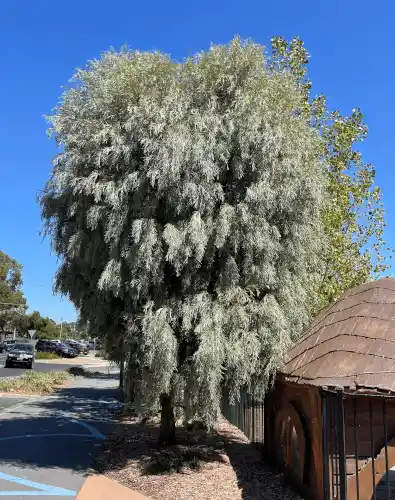
Landscape uses
Weeping Myall’s unique characteristics make it a valuable addition to various landscape settings. It is ideal for drought-prone environments and water-wise gardens.
- Specimen tree: Its distinctive weeping form and silver-grey foliage make it an attractive focal point and contrast to any typical green landscape.
- Ornamental gardens: Its weeping form dramatically softens the landscape and contrasts nicely with other plants.
- Windbreaks and screening: Its dense foliage and adaptability to dry climates and tough growing conditions are highly desirable for open and exposed areas that require wind protection or screening.
- Shade tree: Its dense foliage provides welcoming shade in various scenarios.
- Wildlife habitat: Acacia pendula provides habitat and food for native birds, particularly parrots that feed on its seeds.
- Street tree and avenue planting: The tree’s low-maintenance nature and adaptability to pruning make it compatible with urban infrastructure. Its dense, graceful form is perfect for avenue planting.
FAQs
How tall is the Acacia pendula tree?
Acacia pendula grows up to 6 – 10 metres in garden settings but can reach 12 – 13 metres in optimal environments.
What type of soil does Acacia pendula like?
Acacia pendula is highly adaptable to various soil types. It can thrive on light, sandy soils or heavy clay soils. It can also grow on acidic, neutral, or alkaline soils and tolerate salinity.
While proper soil drainage is often required for Australian native plants to prevent root rot, Acacia pendula can sustain periodic waterlogging.
How do you propagate Acacia pendula?
Acacia pendula can be propagated through seeds or semi-hardwood cuttings.
While seed propagation is commonly used, it may result in diverse growth habits due to genetic variability. Propagation by cuttings ensures the new plants are identical to the parent plant’s characteristics.

